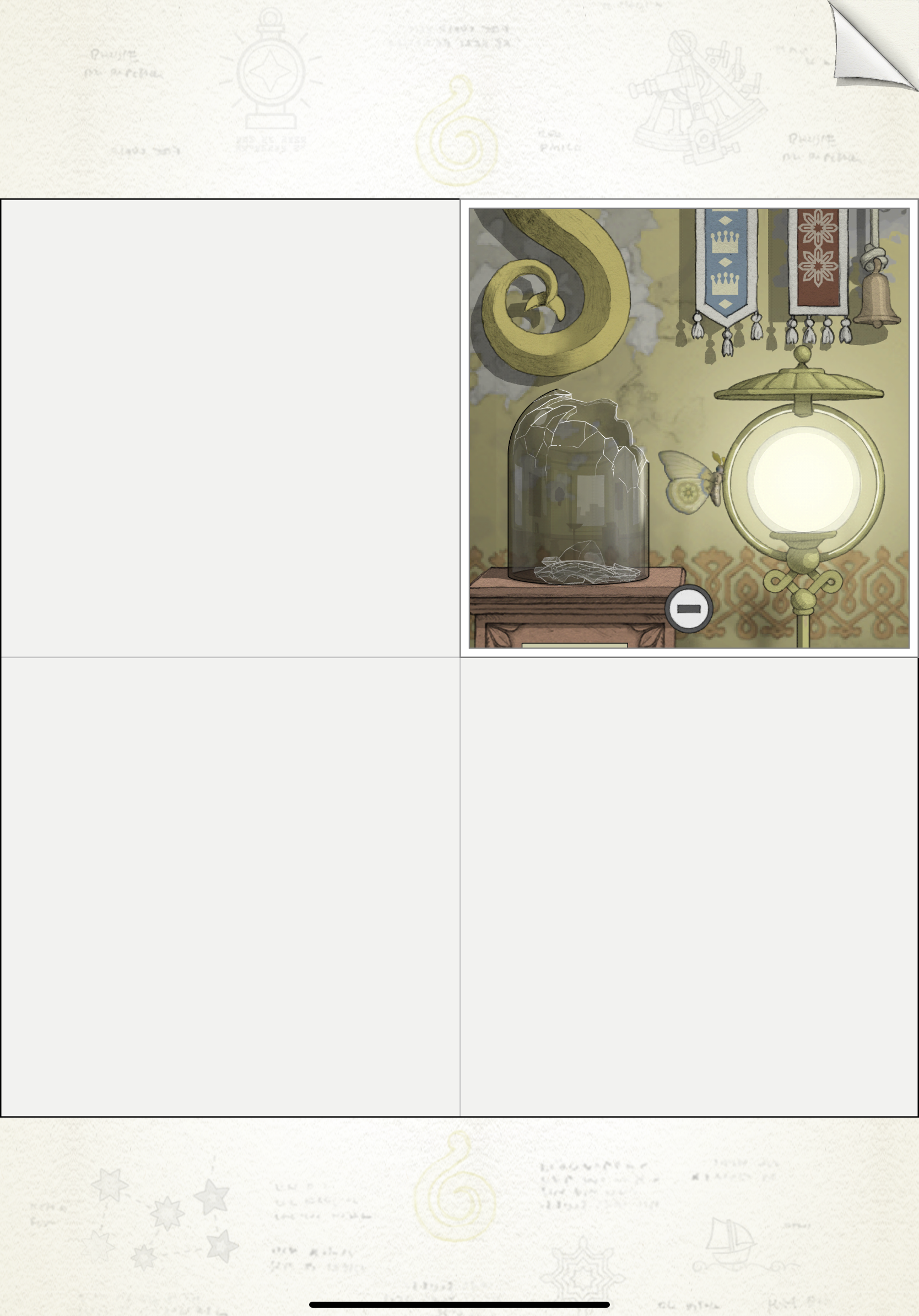Gorogoa
Gorogoa is a game by Jason Roberts created over five years. This beautiful game has incredibly detailed illustrations that pull the player into the world. Its intricate puzzles build up in complexity over chapters to create an addictive experience. Here are the ways that I think the mechanics of the puzzles influence the experience of the game.

1- Limited ability
At the beginning, I actually found the game very confusing. I couldn’t tell what to do next and found some visuals misleading. For instance there’s a dog ear mark in the corner that suggests that you might need to turn the page to see what’s next. This, however, only pauses the game. There’s also the sound of a clock ticking that adds a sense of urgency or time passing but this doesn’t persist across the game and I’m still not sure, 3 chapters on, if there’s a timed element to the game.
The beauty of this game however, is its commitment to the puzzle theme and the rules the designer has set. The player controls aspects of the game by zooming into elements of frames and moving the frames around as if they were physical cards. As Roberts describes at the 2018 GDC, he made a purposeful decision to limit a player’s ability to inject energy into the game. So the player cannot move anything in the game but can influence where the character and some objects go by arranging the cards in different ways. This pushes the player to think creatively about how things fit together and how they can influence elements in a frame.
One thing that struck me is what Roberts said it took to stay true to the rules he himself set for the game. It is costly to have to limit the player in this way because it requires a bit more thinking and ingenuity on the designer/developer’s side. However, I’m glad Roberts stuck with this format because I think the limitation is a great additional obstacle for the player that adds to the satisfaction of solving a challenge.

2- Creating immersion: “duality of objects”
As part of the world building, Roberts wanted to make sure all the objects that are present feel like they belong in their settings. To make them part of the puzzles then, he designed them to have dual purpose. They blend into the background as things you would find in someone’s library so you have to look harder to find their real purpose within the game.
This helps keep the feeling of immersion into the world and makes the puzzles all the more interesting. The objects themselves are unique combinations of oddities that fit the otherworldly feel while still evoking museum pieces or a collector’s item. They are beautiful to look at and full of detail.

3- Scaffolded challenges
The puzzles get more and more complicated as time goes on ensuring that they follow the player’s experience level. At the beginning, while you can’t stumble on the right answer, you could still find the answer without relatively great effort. As you learn the rules of the world, however, you are expected to use them to solve more and more challenging puzzles. The loops of frame movement are reinforced and used with the arcs of new challenges. For instance, in the first chapter, you need to figure out that you can move your character through portals by moving frames around. This is an element that repeats in every chapter. Later on, you use your experience to understand that you can move frames around to use them as pieces of a bigger frame.
This helps make the puzzles feel as challenging as when you first started. I myself was so engaged throughout the game because of this element. The rush that I felt when I finally figured out how to use the Pachinko style puzzle by moving frames around constantly to catch a falling stone was so intense I actually hooted!

Conclusion
I think overall, this game is incredible and shows the level of thought that went into it over the 5 years it took to make. I feel that onboarding could be a bit better. The lack of language is a great way to keep it accessible to a wider audience but some directions could be clearer without adding any actual letters.





